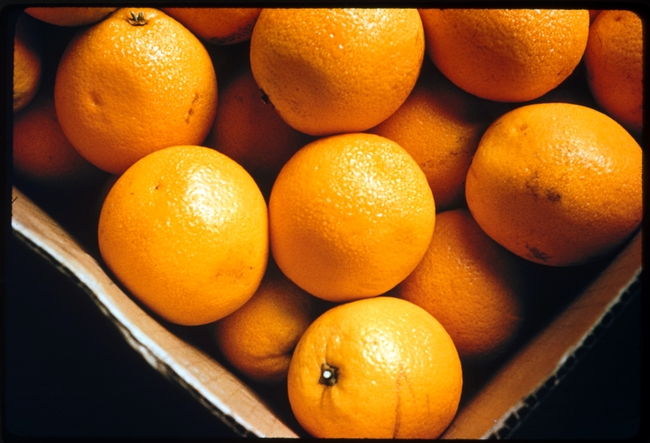
Some are surprised to learn that as recently as 1950, Los Angeles County was the No. 1 agricultural county in the United States, its farms producing an abundance of fruit, vegetables, eggs, milk, honey and much more. Today, Los Angeles residents tend to think of our county of 10 million residents in strictly urban terms, but the most current available statistics from the USDA Census of Agriculture (2007) showed 1,734 farms in L.A. County. Though ornamental plants are now our biggest crop, more than $31 million in vegetable crops came from Los Angeles County farms in 2011, according to the county’s most recent Crop and Livestock Report. The bulk of the vegetables we produce are root crops, which include onions, carrots and potatoes. Most commercial farming takes place in the high desert around Lancaster and Palmdale, and is seldom seen by most of the county’s population. A sprinkling of small urban farms is also cropping up around the county, as documented by UCLA urban planning students in their recent Cultivate Los Angeles study.
But the amount of food produced in Los Angeles County is just a tiny portion of what’s grown in our regional foodshed, defined as a 10-county region within a 200-mile radius of Los Angeles’ urban core. Our foodshed has some of the most productive farmland in the state, encompassing some 23,000 farms. Strawberries and lemons from Ventura County, lettuce and broccoli from Imperial, and milk and almonds from Kern are some of the highest-value farm products in California.
Yet much of what is produced is shipped to far away markets, and does not reach the plates of area residents. Lack of affordable fresh produce is a fact of life in many Los Angeles County neighborhoods, despite their proximity to agricultural bounty.
Looking at the overall foodshed helped the Council to conceptualize a key initiative, the Good Food Purchasing Program, which encourages institutions to buy from small- and medium-sized regional farms, along with meeting other purchasing goals that make healthy food accessible. The City of Los Angeles and LAUSD (Los Angeles Unified School District) were the first two entities to sign on. The impact of LAUSD’s efforts in purchasing regional food were recently profiled in a Los Angeles Times article that highlighted how new local jobs have been created thanks to LAUSD’s buying power. This is one example of how thinking about food regionally, and working collaboratively across sectors, can help create a stronger food system. As the director of LAUSD’s Food Services said, "It's fresher food from farmers we know," when regional food is on the menu. And, it’s good for the local economy, too.